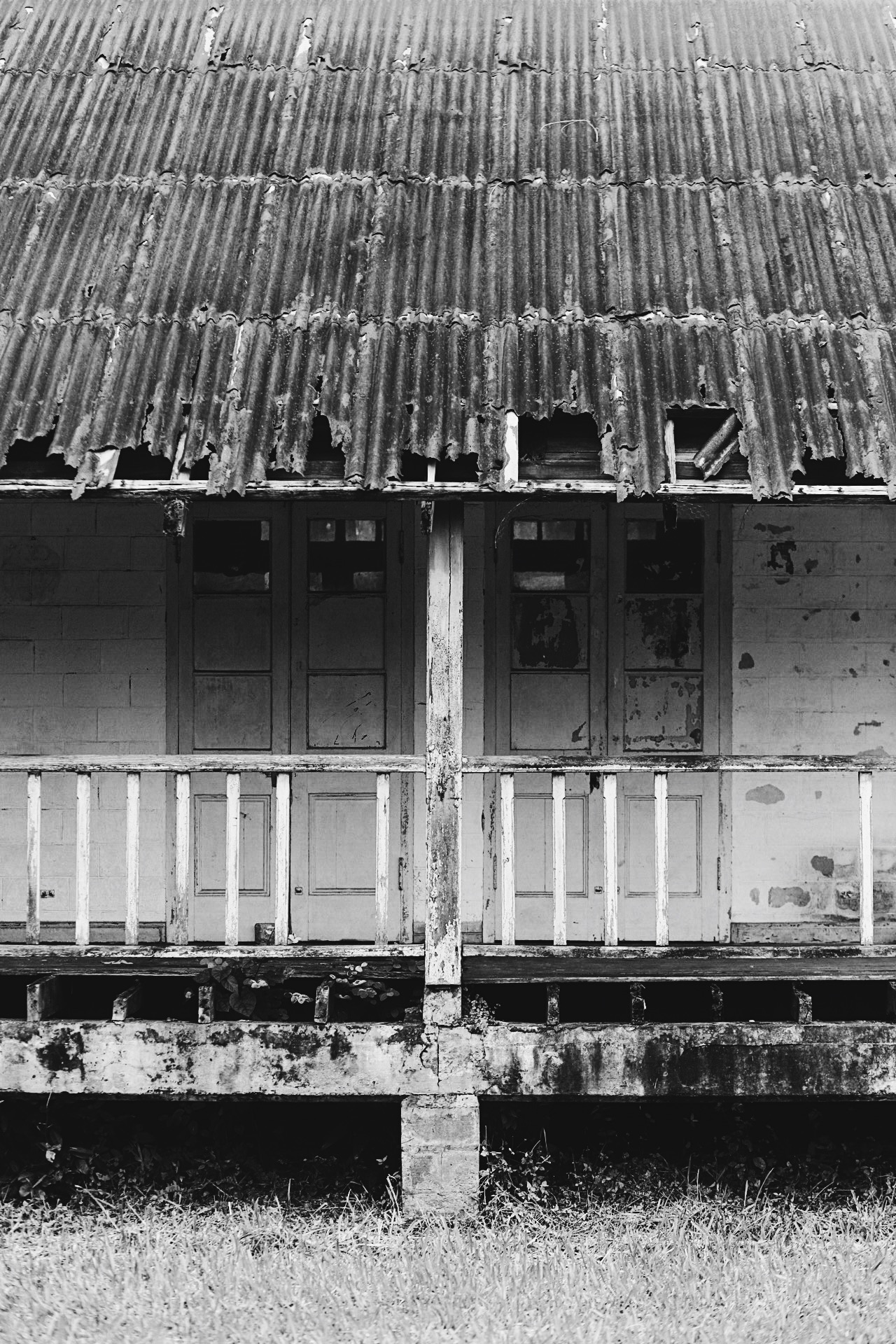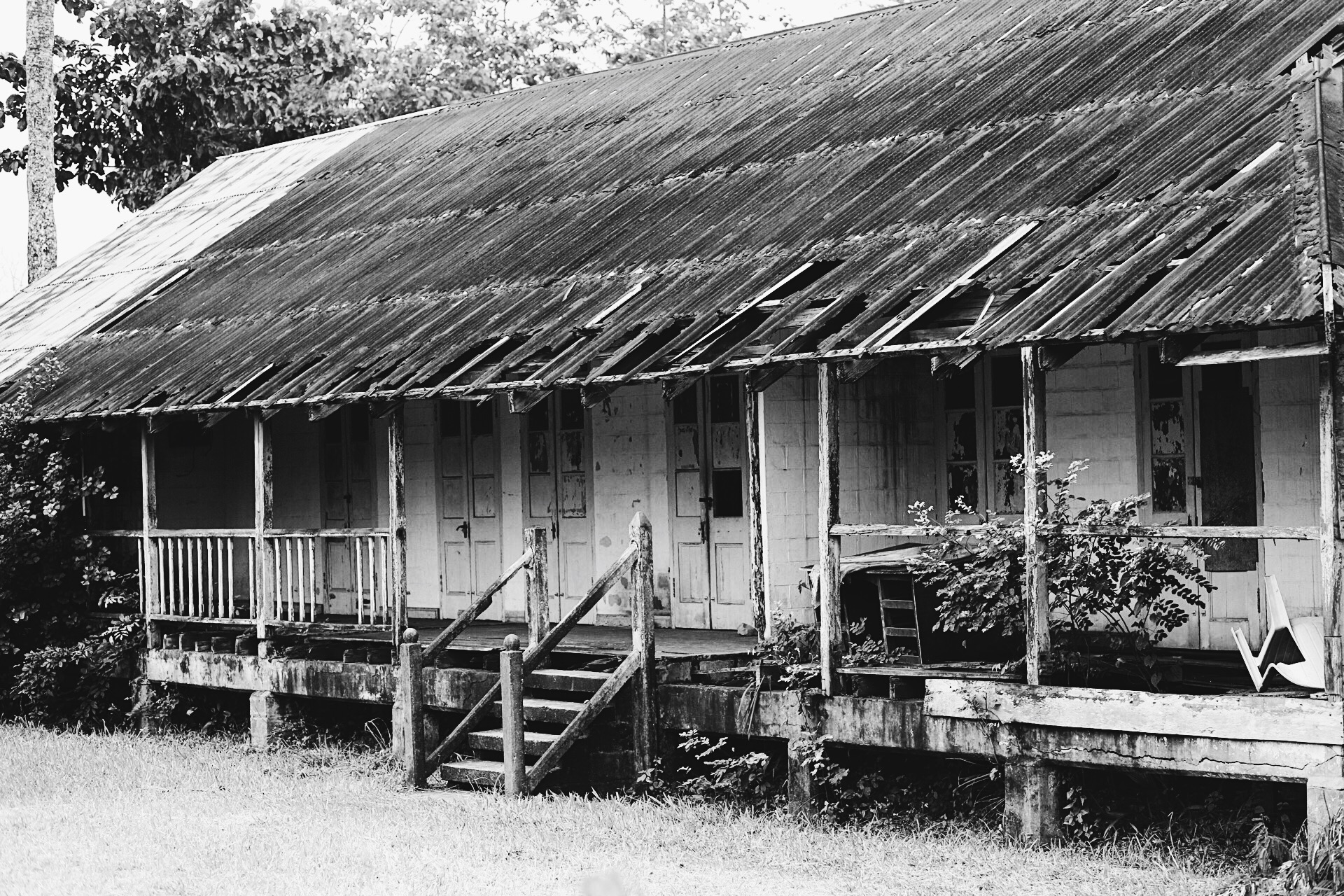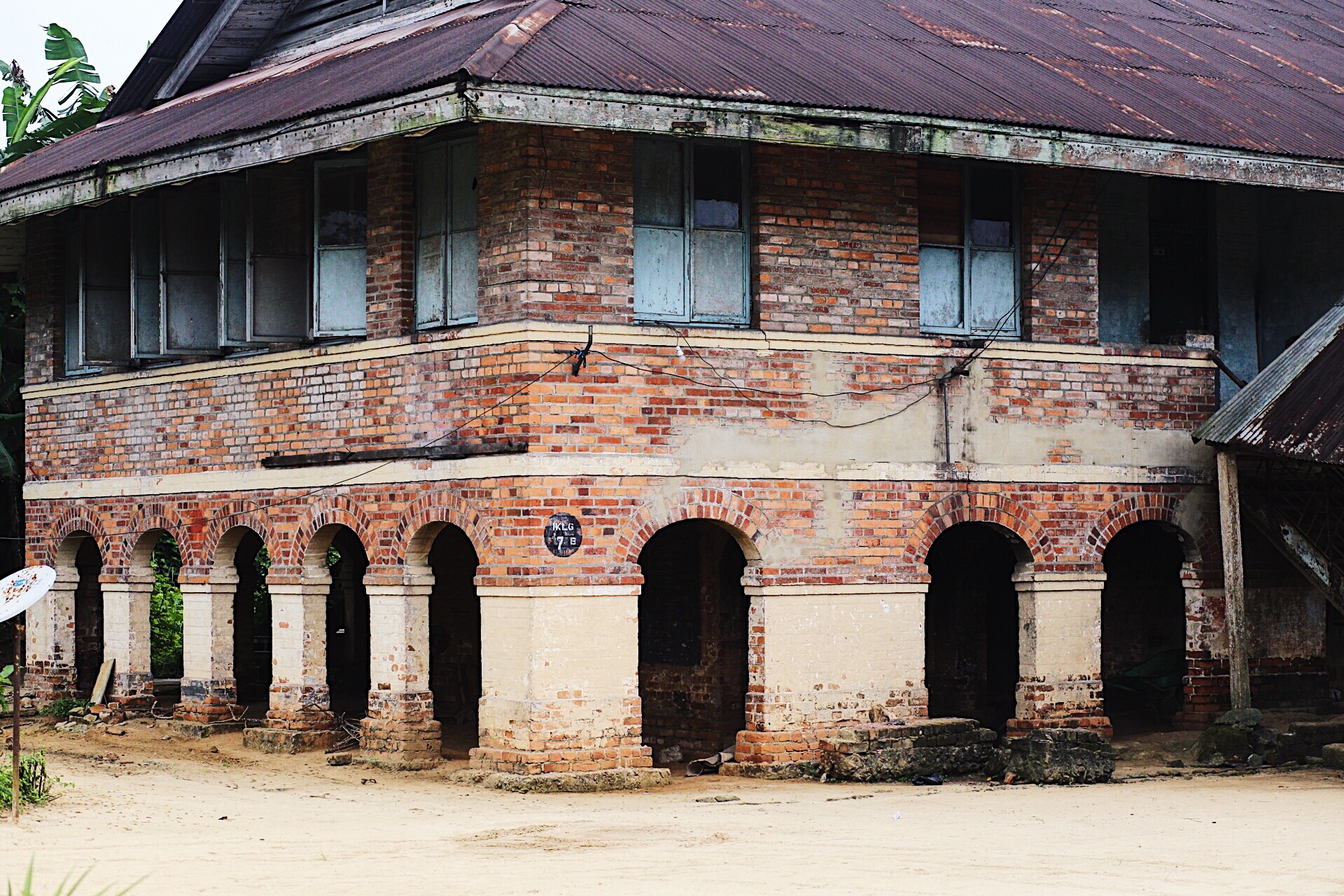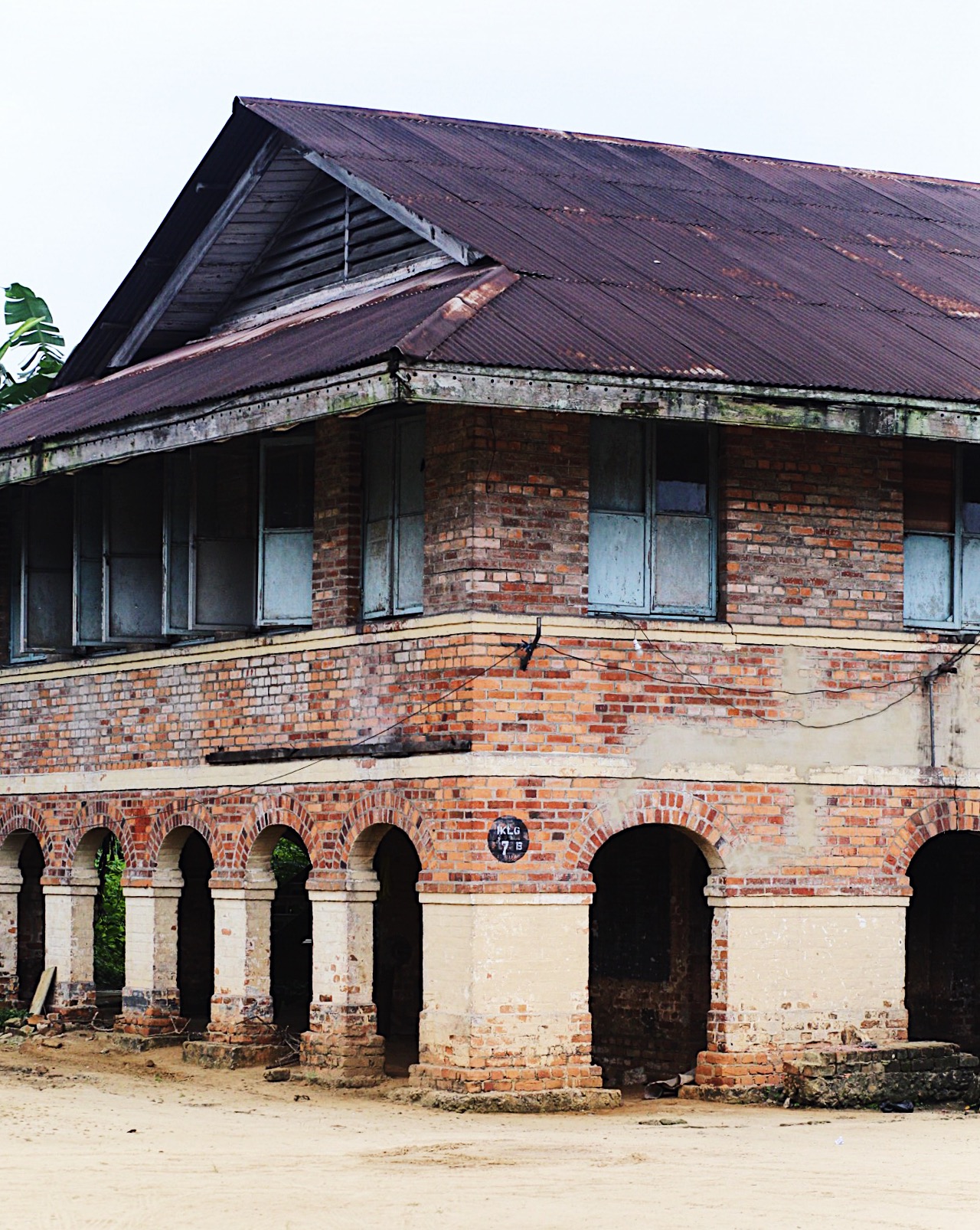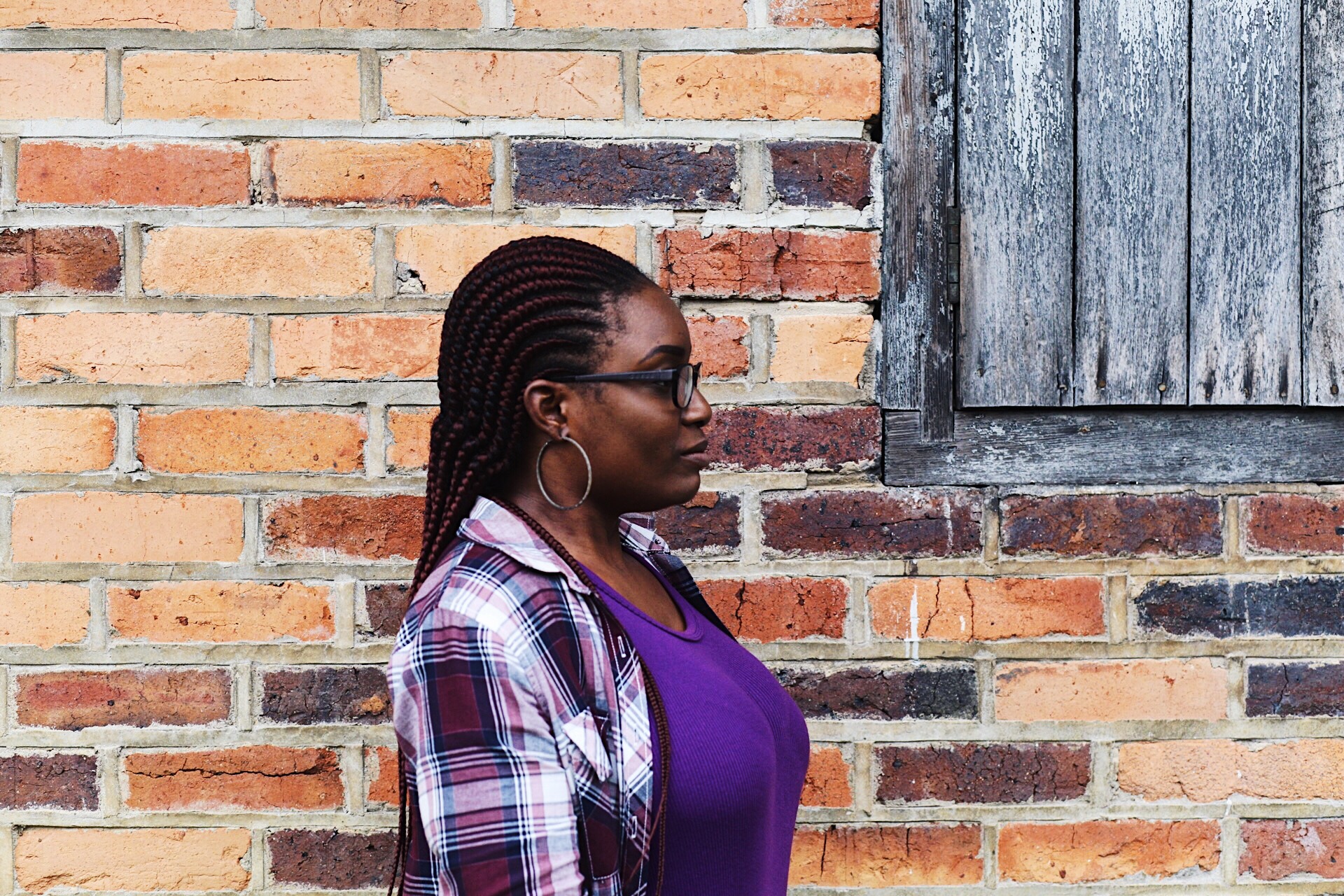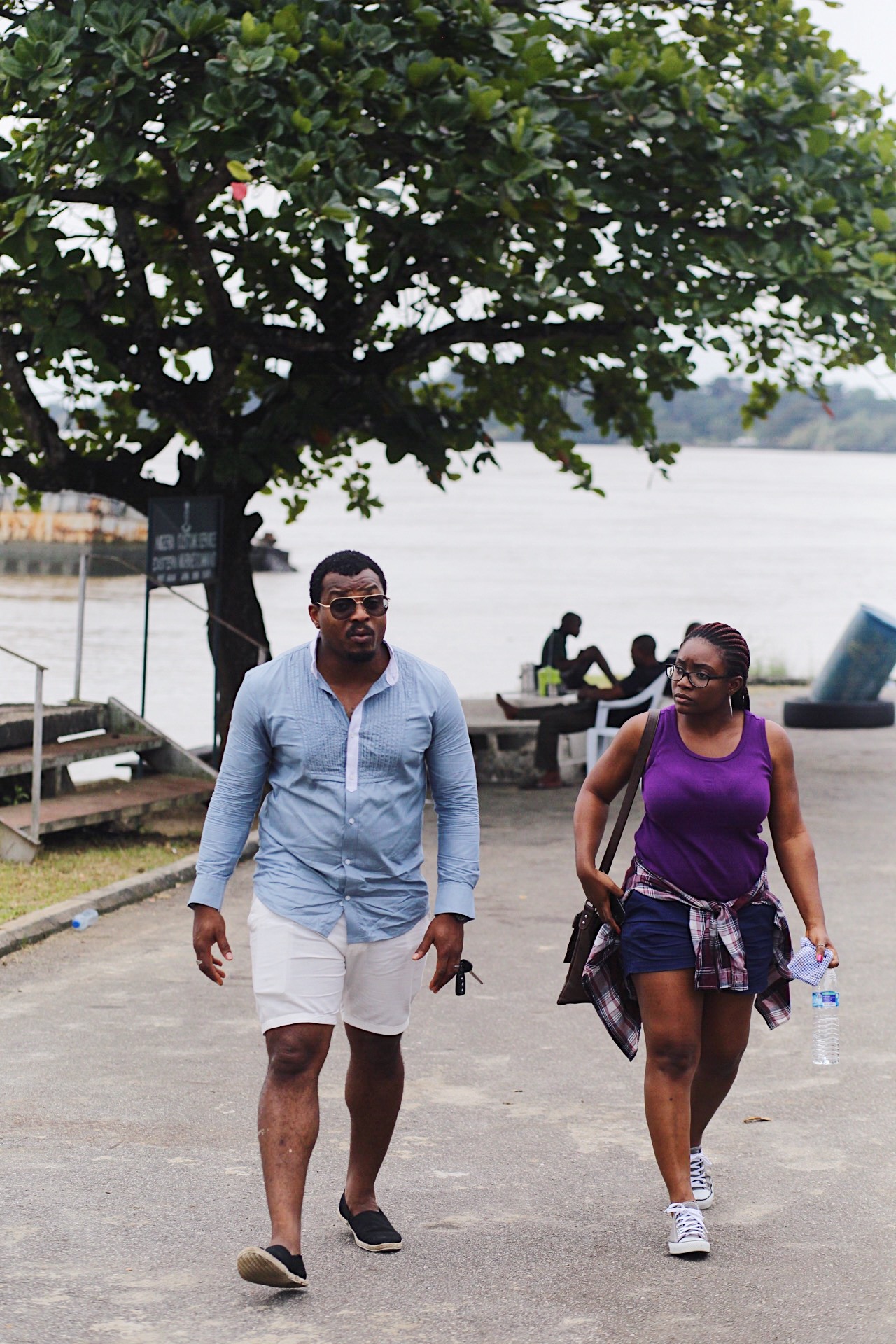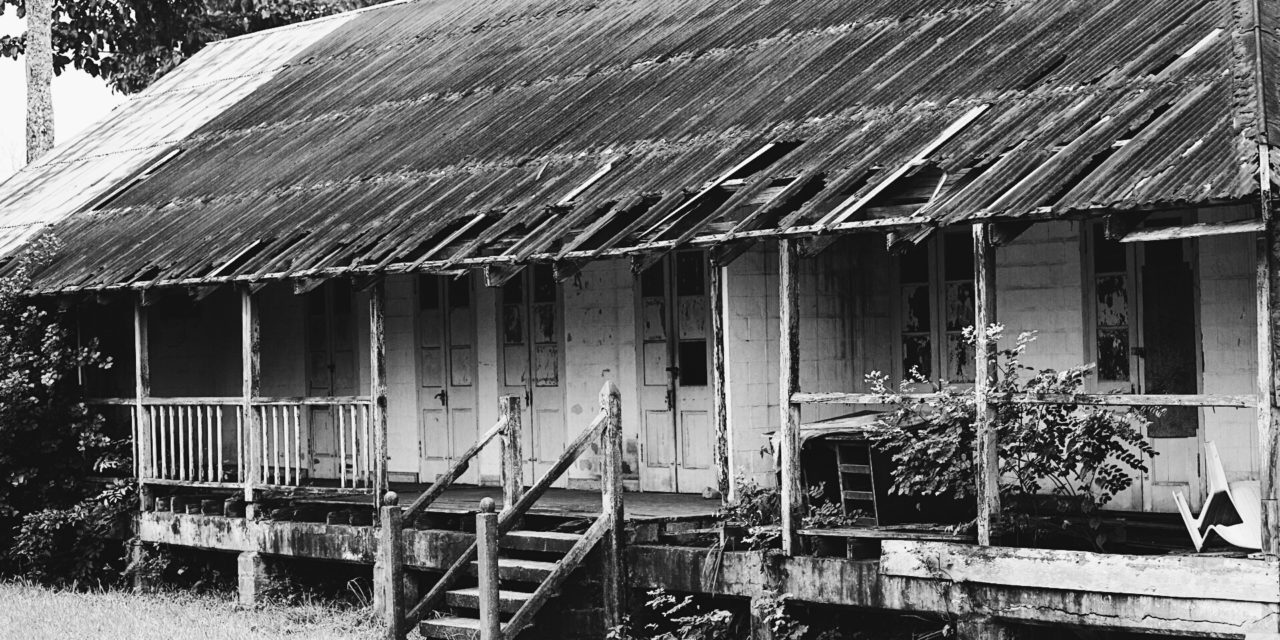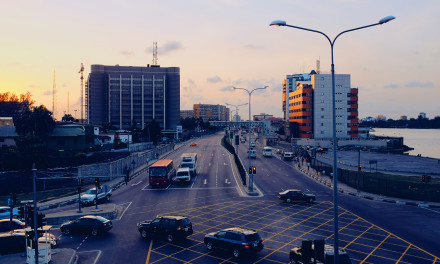I went with some friends to Ibeno last weekend and on our way back we decided to take a detour to Ikot Abasi. We weren’t disappointed.
This little town on the banks of the Imo River clearly used to be important back in the day (it used to be a sea port). The colonial era baked brick buildings look well preserved. Maybe the best preserved I’ve seen so far in Nigeria (okay maybe I’m exaggerating a bit. The office block at Hope Waddel in Calabar and CIC in Enugu are probably way better).
I can’t say the same for the office building where the documents were signed that brought the northern and southern protectorates together to form Nigeria. Parts of the roof, ceiling and wooden floorboards are missing. The building is in a terrible state.
This tiny crumbling building is allegedly also where the Biafran Civil War ceasefire was signed by General Obasanjo and General Effiong (I couldn’t find any concrete evidence to support this though).
Ikot Abasi is also the location of the massacre of women by British troops during the Women’s War of 1929, which is also known as the Aba Women’s Riot of 1929. There’s a monument at the site to commemorate the sacrifices made by the women that were killed on that day, December 15th, 1929. There’s also a museum in the town dedicated to the women who died during the Women’s War.
Other notable buildings in the town are the several colonial era buildings and also the Opobo Boat House which you have to access using a street different from the one along the coast. There’s a bridge of no return which I wasn’t interested in because it looked too modern to be from the 19th century. They can say it was restored but that’s their business.
